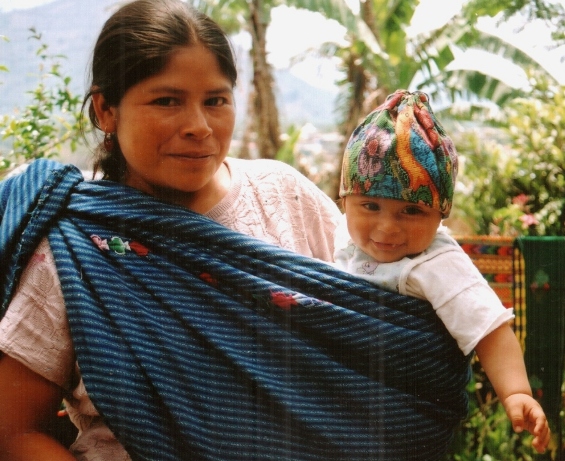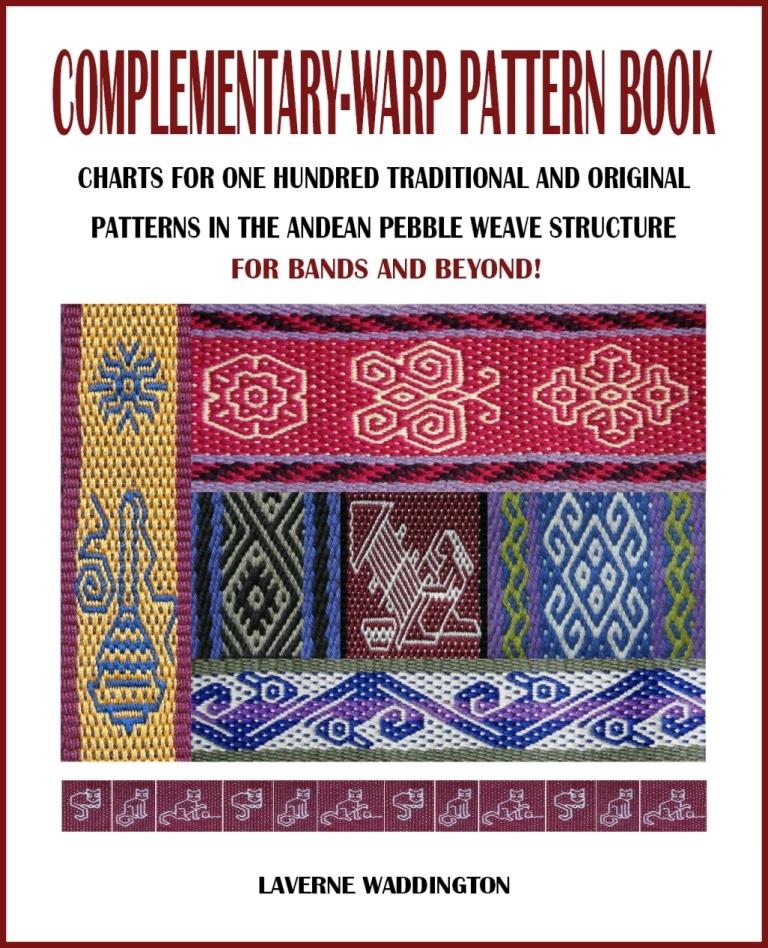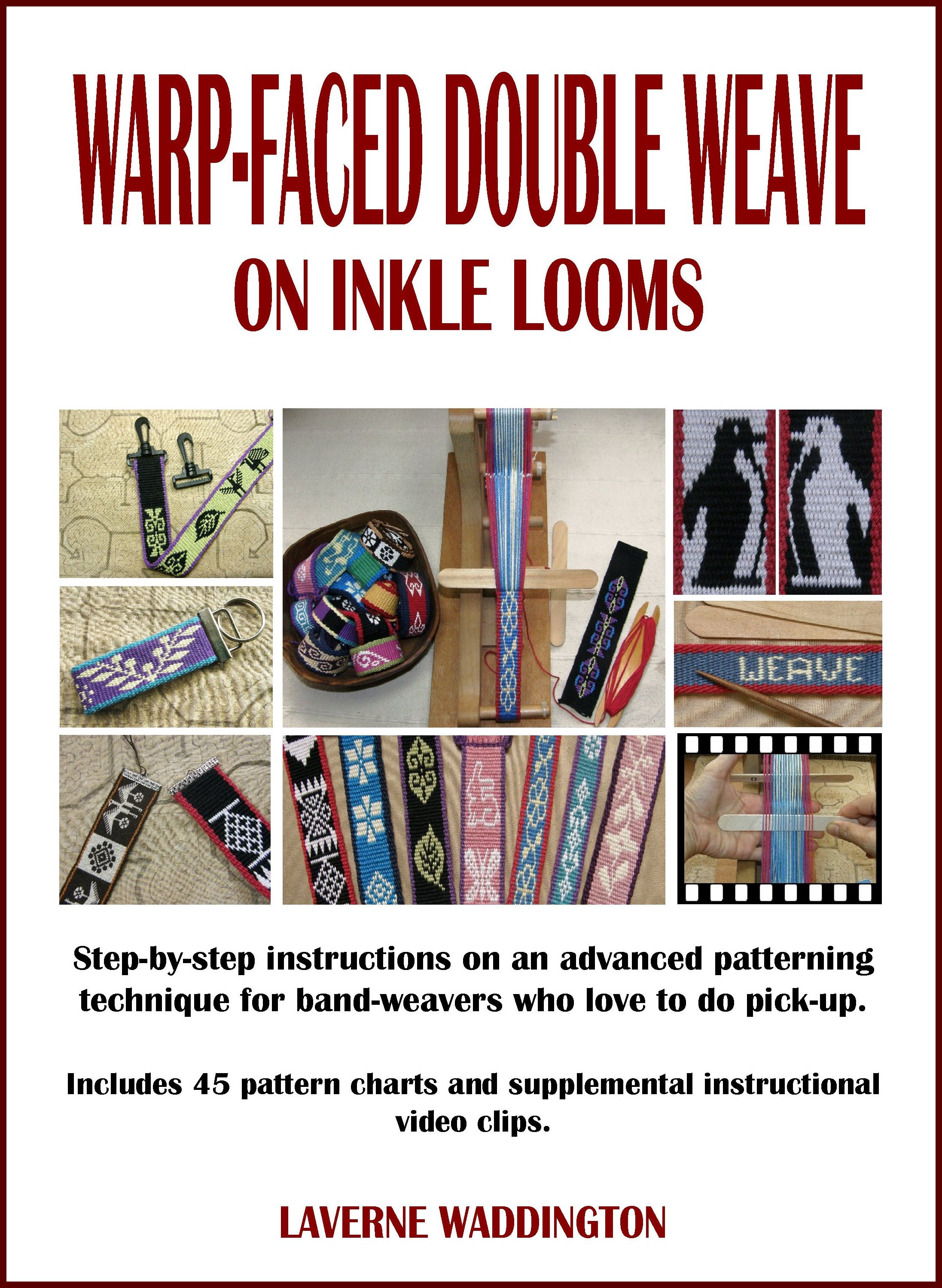Sooooo busy lately with other stuff with little time to devote to weaving! I did, however, find time to make a little experiment with something that I’ve been wanting to try for a long time.
The experiment involved one of the patterning techniques with supplementary weft thread that I learned both here in Bolivia and in Guatemala.
One of the techniques involves carrying the supplementary weft thread all the way across the warp from selvedge to selvedge. I can use it to create all kinds of regular and irregular shapes and it’s the technique that I chose to weave many of my hummingbird figures as well as the silk pillow cover that I showed in my last blog post.

Naturally, adding a supplementary patterning weft to the main structural weft in each shed will thicken the fabric. Sometimes that’s exactly what I would like to have happen if I’m planning a product in which the fabric needs to be quite sturdy. Other times, I use a much finer structural weft than I would normally use to make up for the added weight of the supplementary weft. It’s what I do when I want the final product to be light and have more drape.

At other times, I’ve chosen to use a different technique in which the supplementary weft only travels from one edge of the actual motif to the other rather than across the entire warp. The weft turns in this case to surround the motif forming a sort of frame. This only looks good when I weave more geometric-type shapes with quite smooth sides. The weft-turns sit on the surface of the cloth following the contours of the motif. It wouldn’t have looked good at all around my arrangement of paisley shapes or hummingbirds.


Another patterning technique that I studied in Guatemala that uses supplementary weft involves wrapping the weft around certain warp threads rather than just having the weft float straight across the surface of the fabric.

The wrapping technique enables me to create those fine horizontal, vertical and diagonal lines (note: horizontal lines can be created in the other techniques but their length is limited. Long weft-floats on the surface of the fabric are not practical and can at times sag.)
It was exciting to discover that learning these same wrapping techniques enabled me to replicate motifs that I had seen on textiles from Bhutan (although the actual method of execution of the horizonal lines, is not exactly the same). These little differences in methods used in vastly different parts of the world that produce astonishingly similar results are always fascinating to me.
All the techniques for patterning with supplementary weft that I’ve shown so far are single-faced techniques. The pattern only shows on the upper face of the cloth.

Sometimes the finish tail of the weft is pulled through to the back of the cloth and left hanging there rather than snipped off.

My teacher would cut those tails to about 1 1/2″ length and leave them. The fabric is used to make the typical woman’s blouse (huipil) and the ends on the inside of the blouse can’t be seen when the piece is being worn.


I did study one double-faced technique when I was in Guatemala in a town near Antigua. This technique allows the motif to appear on both faces of the cloth in exactly the same colors.

The Guatemalan women use these fabrics to create their blouses. The fact that the fabric is double faced cannot be appreciated when the blouse is being worn. The little baby’s cap with drawstring top, worn here by my teacher’s nephew, was woven in this technique making it reversible.
It’s the very slowest technique that I’ve learned so far! I wove a few motifs including the pair of quetzales when I got home and haven’t used it again since. My quetzal project was poorly chosen as I used the fabric as the cover of one of the books that I made in which I recorded instructions for the technique. The back side of the fabric can’t be seen! All that work for nothing.

What I am heading to with all this talk about single-faced and double-faced patterning techniques that use supplementary weft is the latest experimental piece that I wove and mentioned right at the start of this post.
I wanted to see if I could create a double-faced pattern using one of the single-faced techniques….a pattern that appears simultaneously on both faces but without that sort of cross-stitch look.
I played around with that and it worked. In this example I used gold supplementary weft on one face and green on the other. I could have used the same color on both faces if I’d wanted to.
I used motifs that I’d designed for another single-faced project some time ago. This is black 60/2 silk and several strands of 120/2 silk as supplementary weft. I love the fact that the fabric can be double faced and have the smooth satin-y look that this technique with its longer weft floats allows. The problem is that using twice the amount of supplementary weft in order to cover both faces naturally thickens the fabric.
So, I need to think of a suitable product….something that requires a heavier fabric and which allows both faces to be exposed (so, that’s a “no” to the purses and bags that I like to make). Right now, as it is fresh off the loom, it doesn’t have enough drape to make a comfortable cowl or scarf (besides, I’ve decided that I don’t enjoy wearing scarves). However, I first need to wash and hard press it to find out how well it relaxes in order to see what kind of drape it gives me. It’s amazing how much my warp-faced silk textiles transform after a good hard press.
I’m big on process rather than product but I would really like to create something useful in this technique in which both faces of the cloth can be appreciated. If you have any ideas, do let me know, please. A bag strap has been suggested….but in 60/2 silk?….maybe not practical for everyday use. Maybe a silk strap for a silk bag for evening wear.
I’ll finish by telling you that Stacey Harvey-Brown’s book, Woven Optical Illusions, Pattern and Design from Four to 24 Shafts (The Crowood Press), has just been published. I was excited to be asked to contribute this photo of my backstrap-loom-woven Finnweave piece to the Gallery section of the book. I might try one of the four-shaft patterns in the book on my backstrap loom some time. Details on how to purchase the book are here.

























una tenda
By: Stefania on June 1, 2024
at 4:49 am
Beautiful pieces. And fascinating techniques!
By: Berna on June 17, 2024
at 8:11 pm